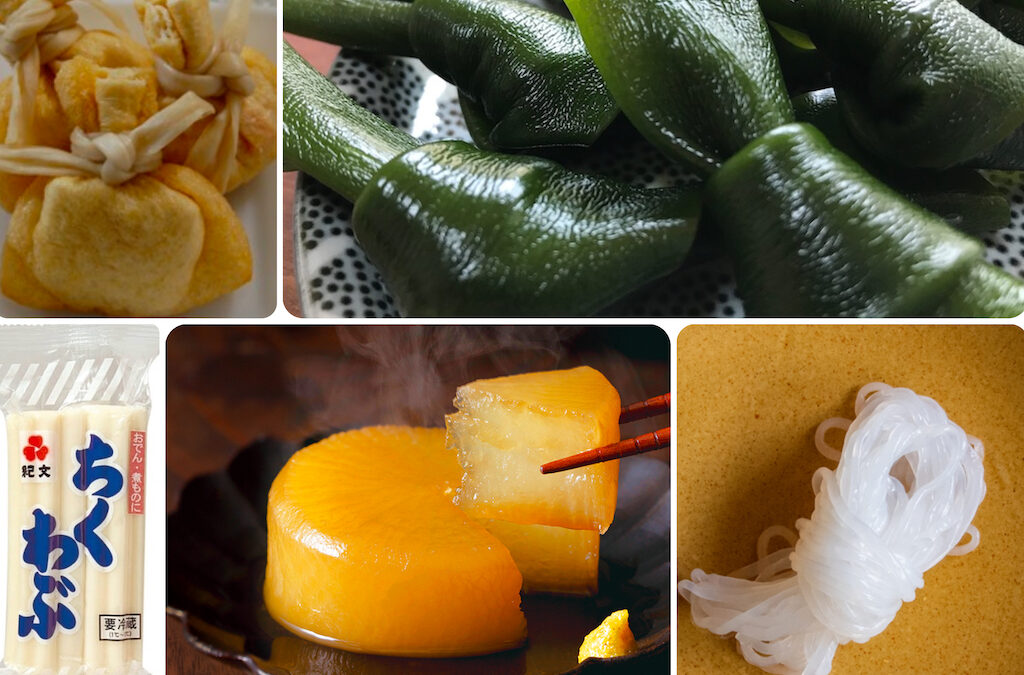
by Elizabeth Andoh | Jan 12, 2021 | Kitchen Culture, Winter, Year-Round
おでん Oden Various ingredients find their way into the belly-warming stew known as oden. Most versions include myriad sausage-like items made from surimi (fish and seafood ground to a paste). There are, however, lots of options for those who prefer plant-based items...
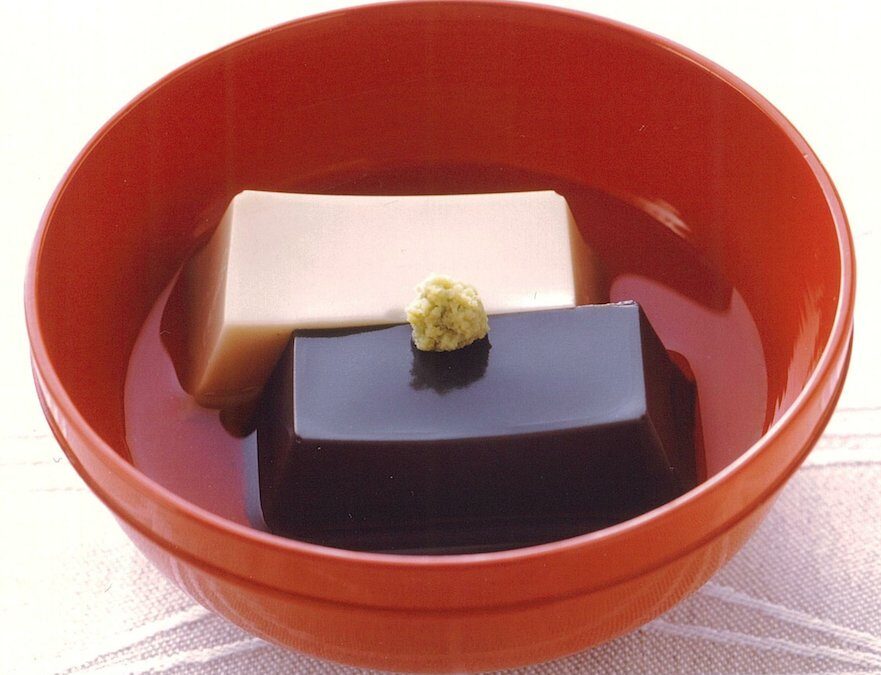
by Elizabeth Andoh | Nov 1, 2020 | Autumn, Kitchen Culture, Year-Round
Buddhist Cookery & Sesame Pudding 精進料理 Shōjin Ryōri・胡麻豆腐 Goma-Dōfu Goma-dōfu, a creamy-smooth sesame pudding, is historically associated with fucha ryōri, a Chinese-style of Buddhist cookery that arrived in Japan with Zen Priest Ingen in 1654. The pudding is a...
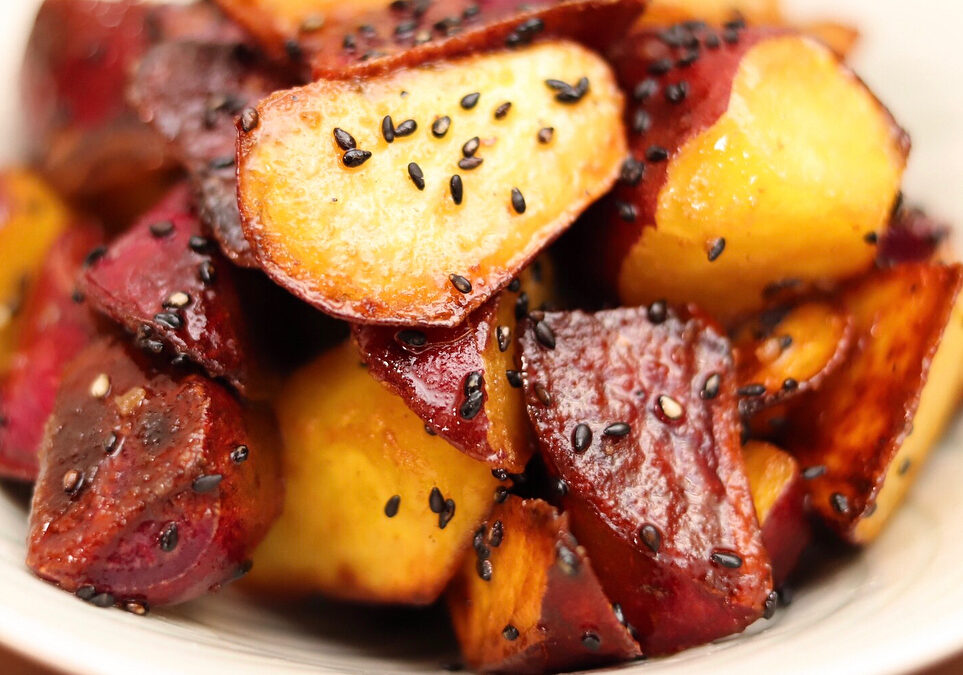
by Elizabeth Andoh | Oct 6, 2020 | Autumn, Kitchen Culture, Year-Round
Daigaku Imo (Glazed Sweet Potatoes) 大学芋 Syrup-glazed, black sesame-studded Daigaku (university) imo (potato) first became popular among university students in Japan at the turn of the twentieth century. To learn more about the history of this dish, read my October...

by Elizabeth Andoh | Sep 1, 2020 | Kitchen Culture, Tools & Techniques, Year-Round
NANBAN-ZUKÉ 南蛮漬け (Southern Barbarian Style Fried-and-Pickled Fish) NANBAN refers to the Portuguese, the “southern barbarians” who settled in the port of Nagasaki, Kyushu late in the 16th century. In addition to Christianity and trade, these early Portuguese visitors...
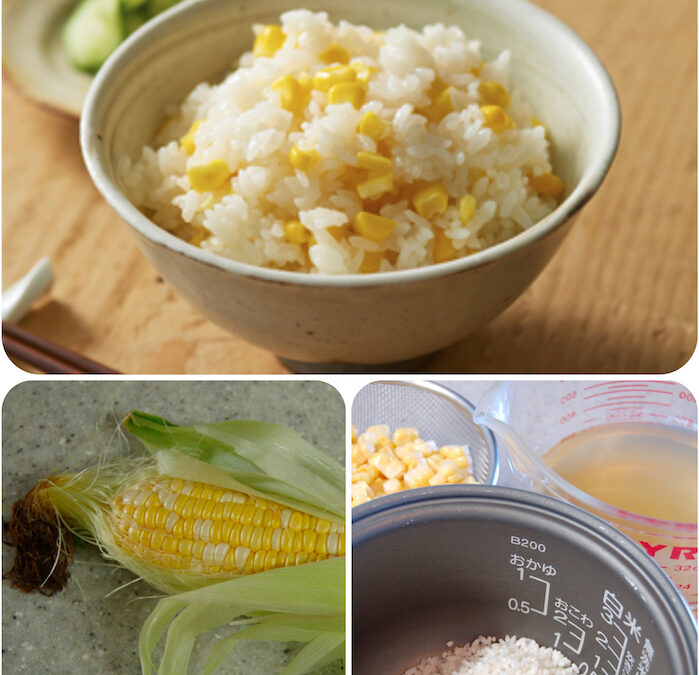
by Elizabeth Andoh | Aug 17, 2020 | Kitchen Culture, Summer, Year-Round
Corn-Studded Rice Tōmorokoshi Gohan 玉蜀黍ご飯 Summertime… bushels of fresh, sweet, corn at every market begging to be taken home and transformed into Tōmorokoshi Gohan: corn-studded rice. Prepared takikomi-style, rice dishes are cooked in a flavorful stock extracted...

by Elizabeth Andoh | Aug 3, 2020 | Kitchen Culture, Year-Round
Soboro Don そぼろ丼 Colorful Big Bowl When I first wrote about soboro don in 1981 for Food & Wine magazine, these sorts of rice bowls topped with various ingredients were little known outside Japan. Fast-forward forty years and classic domburi dishes such as...
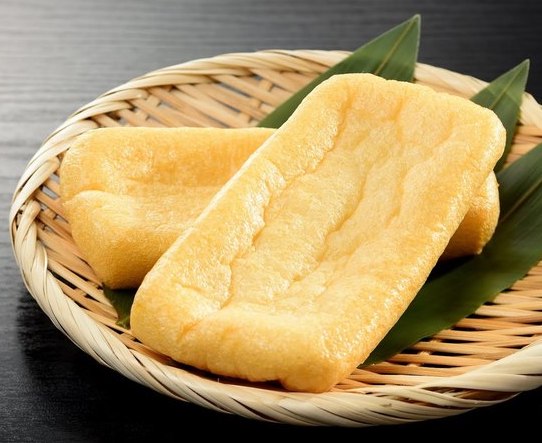
by Elizabeth Andoh | Jul 27, 2020 | Kitchen Culture, Year-Round
Foxy Fried Tōfu Japanese culinary culture is filled with references to foxes and their fondness for abura agé (fried tōfu). Names of dishes made with fried tōfu will often allude to this fox connection. Sometimes you see the word itself, kitsuné (fox) as part of the...

by Elizabeth Andoh | Jul 1, 2020 | Kitchen Culture, Year-Round
COLD NOODLES: Part TWOそば・蕎麦・SOBA Most soba noodles are made from 80% soba (buckwheat) flour and 20% wheat flour; these are known as hachi wari soba (literally 80% soba). If you wish to make your noodle dish gluten-free you will need to buy jū wari soba, noodles made...
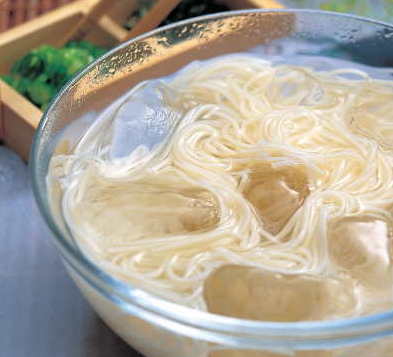
by Elizabeth Andoh | Jun 18, 2020 | Kitchen Culture, Summer, Year-Round
Survival strategy for hot, humid days: Chilled Sōmen Noodles-on-the-rocks! DOWNLOAD information on buying, storing and cooking sōmen and serving the noodles. © Photo by Leigh Beisch Styling by Karen Shinto ネバネバそうめんSlithery Sōmen Noodles Mouth feel (the way a food...
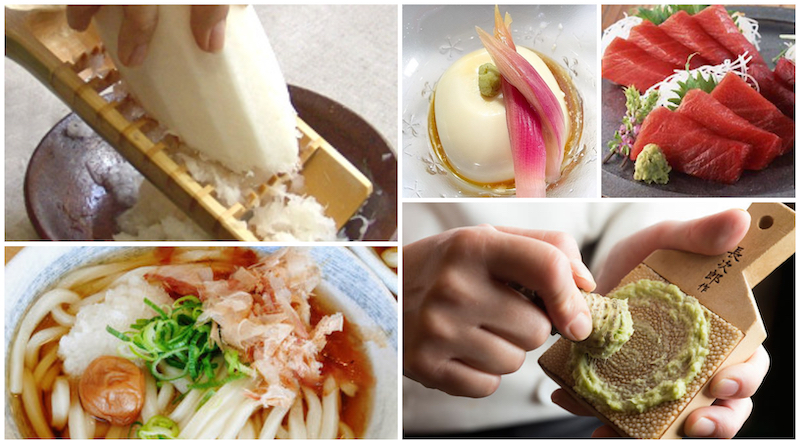
by Elizabeth Andoh | May 22, 2020 | Kitchen Culture, Tools & Techniques, Year-Round
The Japanese developed two very special graters for two specific foods: 鬼おろし機 oni oroshi ki (“monster graters”) made from bamboo used to coarsely grate daikon into shards and鮫の皮 samékawa graters made from nubbly sharkskin that transform tough, fibrous wasabi roots...
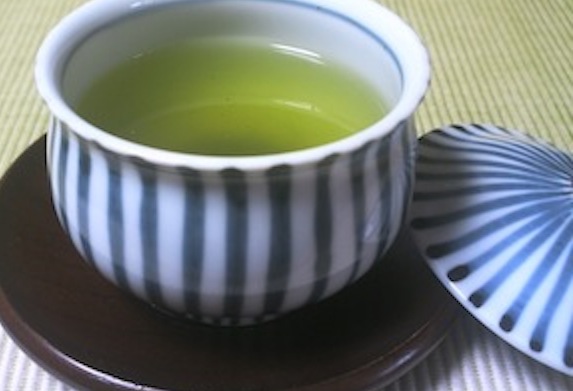
by Elizabeth Andoh | May 1, 2020 | Spring, Year-Round
Green Teas 緑茶 RYOKU CHA Green teas are green because enzymes responsible for oxidization have been prevented from doing their (dark and discoloring) work. The Japanese halt oxidation by steaming freshly picked leaves, while the Chinese typically pan-fire or roast tea...
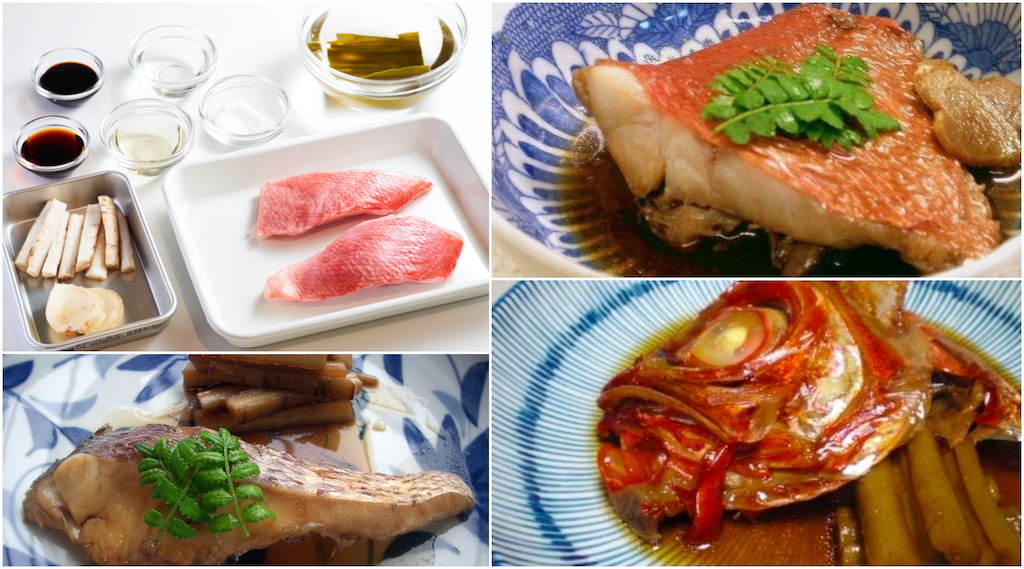
by Elizabeth Andoh | Apr 12, 2020 | Kitchen Culture, Year-Round
Gingery Soy-Stewed Red Snapper, several versions 金目鯛の煮付 KINMEDAI no NITSUKÉ Nitsuké-style stewed fish is especially flavorful when cooked bone-in. In addition to slices with skin and bone intact, various fish parts including heads, and collars are delicious prepared...
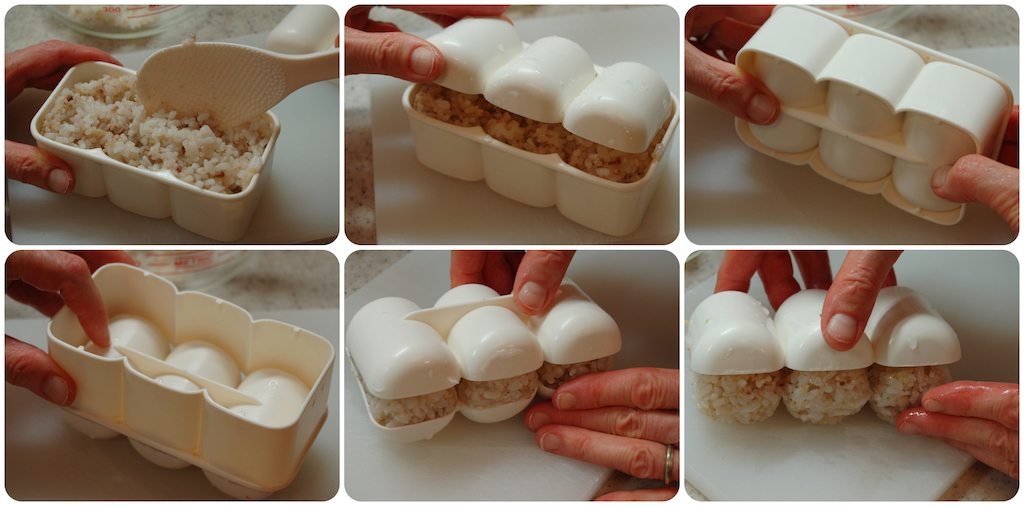
by Elizabeth Andoh | Apr 2, 2020 | Tools & Techniques, Year-Round
Making bale-shaped rice logs 俵型 TAWARA-GATA The Japanese often serve cooked rice at room temperature, packing it in obentō lunch boxes, or making it part of a buffet-like spread to feed a large crowd. At such times, the cooked rice is likely to be pressed, by hand or...

by Elizabeth Andoh | Mar 22, 2020 | Kitchen Culture, Tools & Techniques, Year-Round
Thick Rolled Omelet Atsu Tamago Yaki厚玉子焼き A classic in the washoku kitchen, thick, rolled omelets are made by cooking a seasoned egg mixture, layer by layer, in a pan – preferably a square or rectangular-shaped one. In and around Tokyo, the egg mixture is rather...
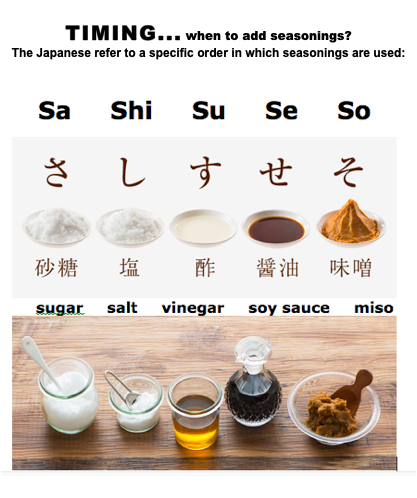
by Elizabeth Andoh | Mar 12, 2020 | Kitchen Culture, Tools & Techniques, Year-Round
Sa = sato (sugar); saké also begins with “sa”; Shi = shio (salt); Su = su (vinegar); Sé = sé is currently pronounced shō and stands for shōyu or soy sauce; So = miso The Japanese Culinary “Alphabet” To maximize flavor and achieve tenderness with minimal...
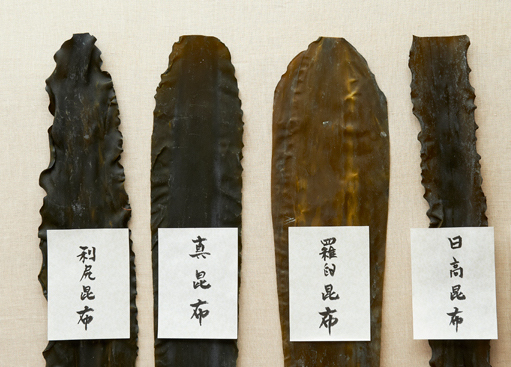
by Elizabeth Andoh | Nov 28, 2019 | Kitchen Culture, Year-Round
Four varieties of kombu (left to right): Rishiri, ma, Rausu, Hidaka. Find out about the differences among kombu varieties and how best to make stock from them. 昆布の力 Kombu Power All varieties of kombu are rich in umami seibun, or glutamates; the essence of flavor...
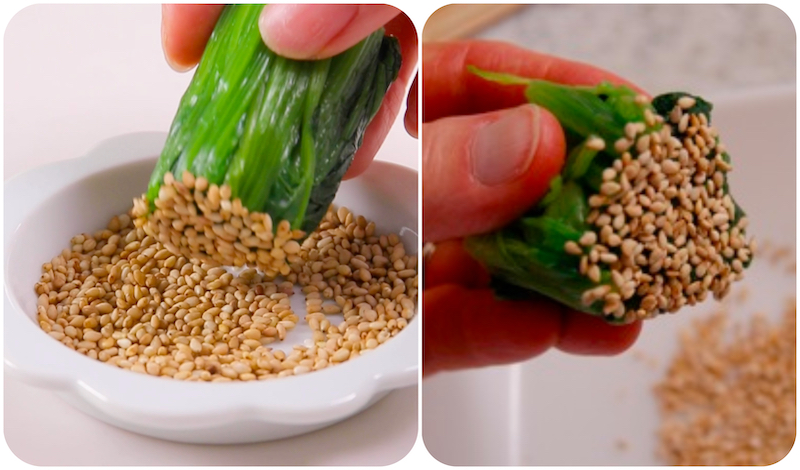
by Elizabeth Andoh | Nov 12, 2019 | Kitchen Culture, Year-Round
Spinach ohitashi garnished with katsuo-bushi flakes. Spinach Steeped in Broth Hōrensō no Ohitashi ほうれん草のお浸し The verb hitasu means “to steep” and is the root of the word ohitashi, a classic dish frequently seen on Japanese restaurant menus, served at family dinner...
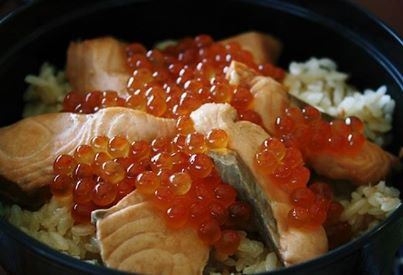
by Elizabeth Andoh | Oct 12, 2019 | Kitchen Culture, Year-Round
HARAKO MESHI, rice cooked with salmon and topped with roe ハラコ飯Harako Meshi Salmon Rice with Roe Archaeological evidence dating back at least 5,000 years shows that the early inhabitants of the Tohoku – the Jomon peoples—fished for salmon. The ancient coastline is...
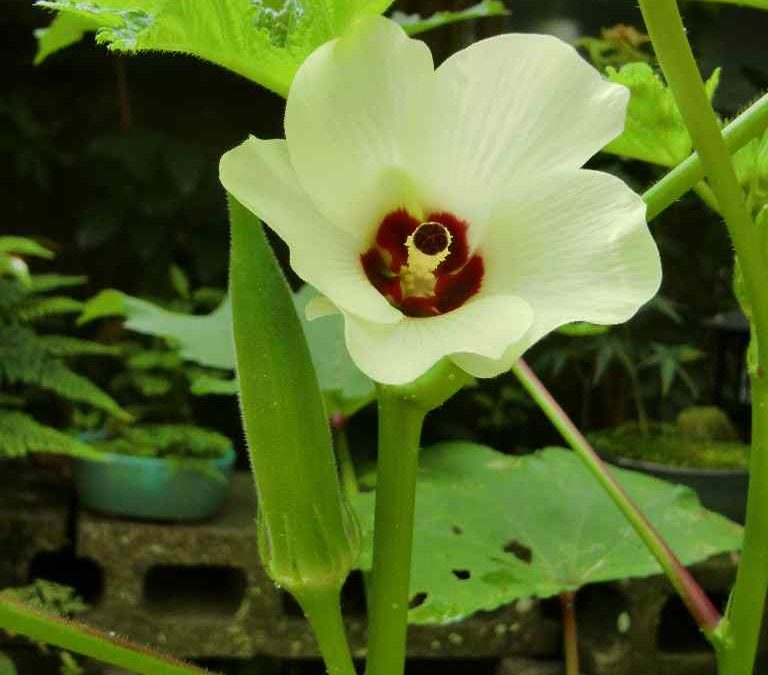
by Elizabeth Andoh | Jul 12, 2019 | Kitchen Culture, Year-Round
TRIM (left)・SALT-RUB (top right)・FLASH-BLANCH (center right)・STEEP (bottom right) OKRA オクラ The Japanese technique for preparing okra heightens its color (jade green) and flavor (reminiscent of green beans and/or asparagus) while limiting its sticky texture. There are...
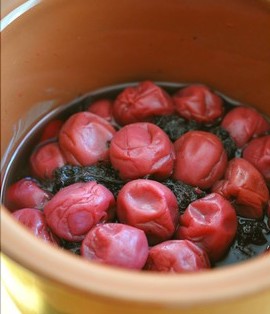
by Elizabeth Andoh | Jun 22, 2019 | Kitchen Culture, Summer, Year-Round
Uméboshi 梅干し and aka-jiso leaves After many weeks of bathing submerged in salty-sour, rosy-colored umézu this year’s plums are ready to be air-dried… the final stage of plum work (umé shigoto). What’s needed is a string of dry days, what’s known as umé no...





















